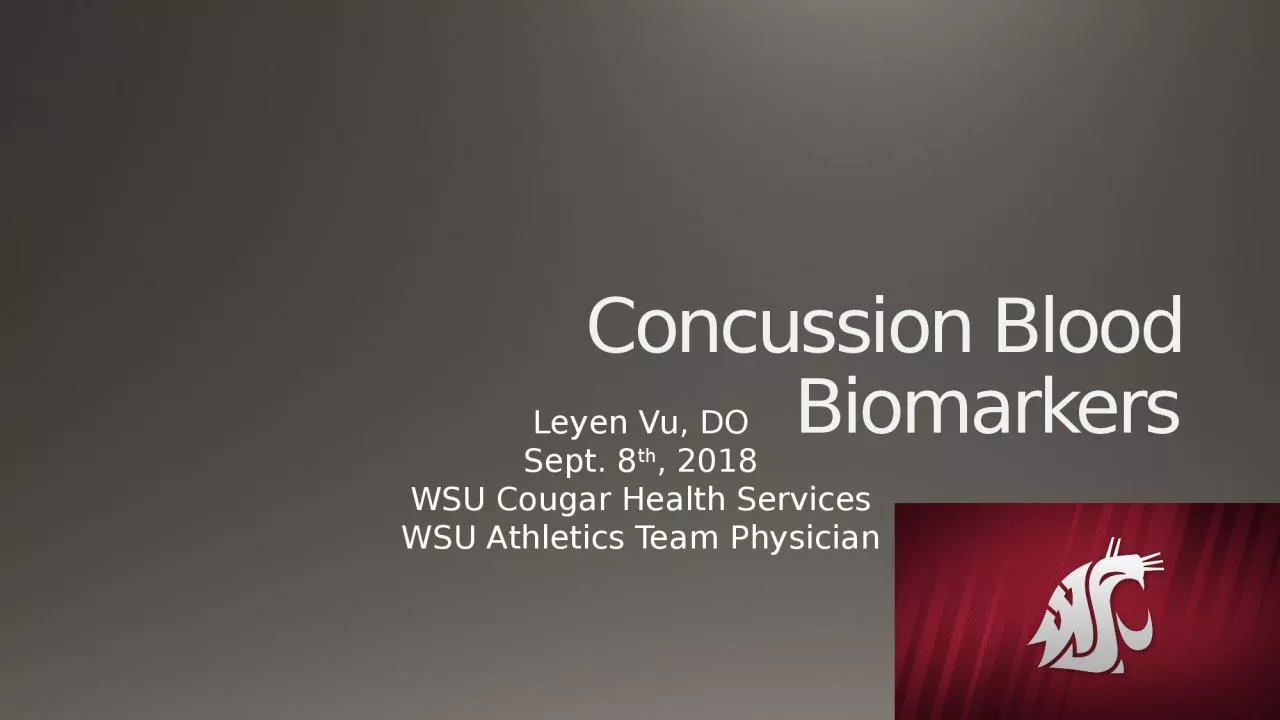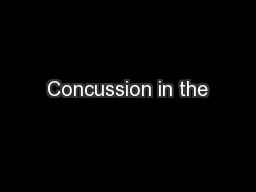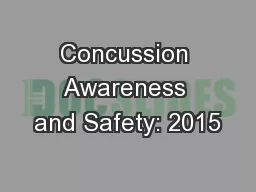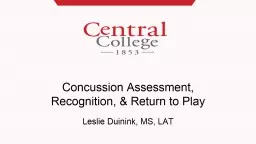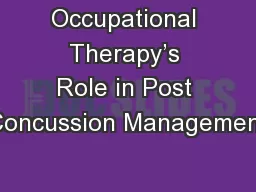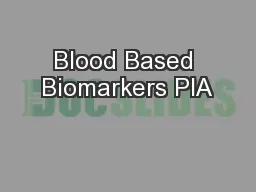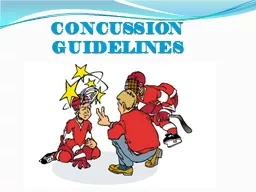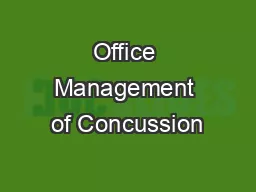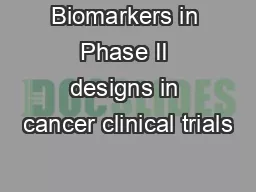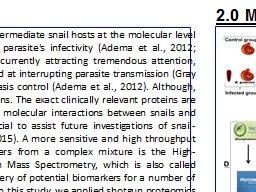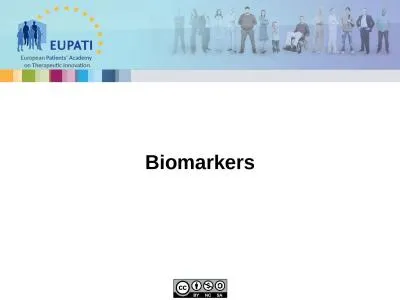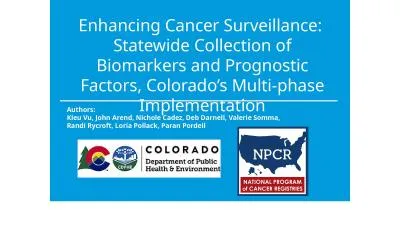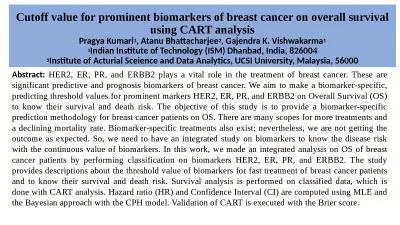PPT-Concussion Blood Biomarkers
Author : davis | Published Date : 2024-02-02
Leyen Vu DO Sept 8 th 2018 WSU Cougar Health Services WSU Athletics Team Physician Objectives Need for objective measures for concussion Identify characteristics
Presentation Embed Code
Download Presentation
Download Presentation The PPT/PDF document "Concussion Blood Biomarkers" is the property of its rightful owner. Permission is granted to download and print the materials on this website for personal, non-commercial use only, and to display it on your personal computer provided you do not modify the materials and that you retain all copyright notices contained in the materials. By downloading content from our website, you accept the terms of this agreement.
Concussion Blood Biomarkers: Transcript
Leyen Vu DO Sept 8 th 2018 WSU Cougar Health Services WSU Athletics Team Physician Objectives Need for objective measures for concussion Identify characteristics of ideal serum biomarkers for concussion. A concussion is caused by bump blow or jolt to the head or body that causes the head and brain to move rapidly back and forth Even a ding getting your bell rung or what seems to be a mild bump or blow to the head can be serious WHAT ARE THE SIGNS AN Pediatric Population. . Dr. Michael Vassilyadi . Children’s Hospital of Eastern Ontario (CHEO). J. Peter Zopfi, DO, FACOS. Trauma Medical Director. Cal North Chairman. USSF “A” License. USSF “Goalkeeping” License. Definitions. Traumatic Brain Injury (TBI). : General term that includes concussions, contusions, subdural hematomas, cerebral hemorrhages and penetrating injuries.. Leslie . Duinink. , MS, LAT. Today We Will. Review Definition & Symptoms. Immediate . Evaluation & . Management. SCAT3 and Child SCAT3. Return to Play. New & Ongoing Research. Questions . Aimil Parmelee, MOT, OTR/L. Marlaina Montgomery, MOT, OTR/L. Incidence . 1,300,000 individuals suffer a mild TBI each year in the U.S.. Total yearly cost is around $60 billion. 75% of all TBI are concussions. Sid E. O’Bryant, Ph.D.. Sid.obryant@unthsc.edu. Blood Based Biomarkers PIA. Founding Goals of the PIA. Standardization & Best Practices for the field. Increasing access to data & virtual repository. Sydney . Crosby . was out for almost a year with concussion-like symptoms. Each season, 10%–12% of minor league hockey players 9–17 years old who are injured report a head injury, most commonly a concussion. Andrea Aagesen, DO. Assistant Professor. Department of Physical Medicine and Rehabilitation. Michigan . NeuroSport. Eastern Michigan University Team Physician. Sports Medicine for the Primary Care Physician. Methods in Clinical Cancer Research. February 12, 2015. Effective incorporation of . biomarkers into phase II trials. There are many roles for biomarkers in Phase II trial designs.. Examples of biomarkers with pivotal role in development of new therapies. Schistosoma mansoni. in . Biomphalaria glabrata. Benson Otarigho. 1,3. ,. , . Leandro Xavier Neves. 2. , . Ananda. Lima Sanson. 2. , . Mofolusho. O. Falade. 1. , William Castro-Borges. 2. 1. Cellular Parasitology . a measurable indicator . that . can . tell . us something about a person’s health or disease . state, for example, . disease (pathological) processes in the body, for example, disease stage. , . biological processes in the body (heart rate, blood pressure, temperature), . Authors: . Kieu Vu, John . Arend. , Nichole . Cadez. , Deb Darnell, Valerie . Somma. , . Randi Rycroft, . Loria. Pollack, . Paran. . Pordell. . Women’s Wellness Connection. BCCP (Triple negative breast cancer). Presented by: . Dr. Puneet Opal . Dr. Hayley McLoughlin. A Virtual Event. March 17-19, 2022. DISCLAIMER. 2022 AAC. A Virtual Event. March 17-19. PRESENTER DISCLOSURES. Dr. Puneet Opal (Northwestern University). Pragya Kumari. 1. , . Atanu. Bhattacharjee. 2. , Gajendra K. Vishwakarma. 1. 1. Indian Institute of Technology (ISM) Dhanbad, India, 826004. 2. Institute of . Acturial. . Sceience. and Data Analytics, UCSI University, Malaysia, 56000.
Download Document
Here is the link to download the presentation.
"Concussion Blood Biomarkers"The content belongs to its owner. You may download and print it for personal use, without modification, and keep all copyright notices. By downloading, you agree to these terms.
Related Documents

